
Triumph over adversity
A vintage full of jewel-like wines that have emerged from a growing season that was never plain sailing. After a devastating early spring frost, growers had to work harder than ever, all the while bringing in some of their smallest crops on record.
It is hard to know where to start when writing up a region as complex and varied as Burgundy, but if you’ll allow us an opening generalisation, it is this; we love this vintage. Indeed, if we strip away recent solaire vintages and position the wines of 2021 in the wider pantheon of Burgundy years, it is hard to see how this wouldn't be considered a very good, at times great vintage. The only real downside is that there’s so little to go around.
These are classical wines built along classical lines. The best brim with grace and joy. They are full of the qualities that Burgundy lovers adore. The reds are expressive, perfumed and detailed; the whites crisp, intense and full of energy.
It is a vintage that reminds us that while natural conditions can throw up all manner of hurdles, human intervention can lead to wines that excel in challenging seasons. It is true that growers were made to work hard for every grape they harvested. But beyond the frost, for many growers, the challenges were simply “normal problems”. This was the sort of vintage the likes of Frederic Mugnier, Bruno Clair and Christophe Roumier cut their teeth on. “It’s the most Burgundian vintage for a decade” Bruno remarked.
What is truly interesting about this vintage, particularly in the context of recent seasons, was the absence of any serious heat events. There were no 40-degree days, no sunburn, no raging sugar levels and no need to race to preserve freshness. Harvest happened in the cooler days of September, when the vines’ biochemistry is allowed to progress at a relaxed pace, giving rise to fully polymerised tannins. The supple textures of the reds are remarkable because of this.
That the lack of extreme heat sets the vintage apart from around two thirds of the last fifteen vintages was, for many, a cause for celebration. The sad fact is that conditions like these are becoming ever rarer. Classically styled vintages such as this are now the exception not the rule. We lost count of the number of times vignerons told us how much they love this vintage. For all the hard work that it entailed, in spite of their empty cellars, growers know that Burgundy lovers are going to be utterly captivated by the wines of 2021.
The key facts of the vintage
- A week of exceptionally warm days at the end of March preceded an early spring frost on the nights of the 6th, 7th and 8th April. The resulting widespread losses were the worst for a generation.
- The earlier budding Chardonnay had its yields more heavily impacted than Pinot Noir.
- For both colours the precocious sites, generally the better placed vineyards, were hardest hit – parts of Meursault reported losses of 90%.
- Summer was devoid of serious heat events and punctuated by regular rainfall.
- Vineyard work was exacting; to ward off the threat of oidium and mildew, and to control vigorous canopy growth.
- The weather improved dramatically on the 15th August with the arrival of dry days and a northerly wind to aid ripeness and concentration.
- Harvest for most started between the 17th and the 27th September – a “perfect late harvest” according to Frederic Mugnier.
- Potential alcohols were lower than the past few years, most wines being harvested between 12% and 12.5%.
- The worst losses were felt in Meursault, Volnay, Marsannay and Gevrey, though no appellation was entirely spared.
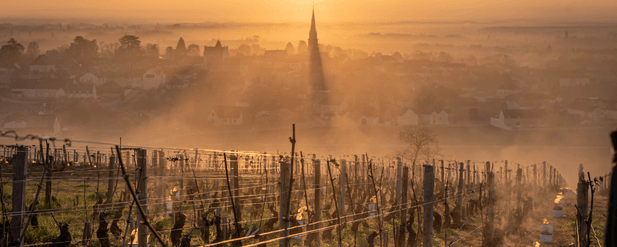
The growing season - a different dynamic
Frost.
After a period of unseasonably warm weather at the end of March, the temperature plummeted and frost bit hard, realising a vigneron’s greatest fear. It was a catastrophic frost event causing widespread losses across the region, the likes of which most growers had never seen before.
The first sign of trouble came at the end of March when growers reported a very swift change in the weather, from averagely cool temperatures to in effect, a mini-heat wave. With the needle touching 30 degrees in the last days of March the vines sprung into growth, and rapid growth at that. When the temperatures plummeted between the 5th and the 8th April buds had burst for most of the Chardonnay in the region, and also for a smaller, but still significant amount of Pinot Noir. Such are the vagaries of growing grapes in a region like Burgundy that this might not have caused such significant damage, but for the hot spell that came immediately before it. It was not a particularly late frost. Minus 8 degrees temperatures were reported in some villages, snow fell and penetrated the buds and finally the magnifying effects of bright sunshine arrived, compounding the damage. Newly born buds simply didn’t stand a chance.
At odds with the 2016 frosts, this was a column of cold air hundreds of metres high. Turbines were generally useless as there simply wasn’t any warmer air to circulate, candles had little effect, even those with the means to fly in helicopters were wasting their time – and those of others. One grower told us how his ‘bougies’ were extinguished on the hill of Corton by the downdraft from another grower’s helicopter. This must have been galling in the extreme.
Almost no vineyards were safe.
““In 2016 there was a very neat line where the frost had stopped ... In 2021, the frost was everywhere, up and down the slopes””
Guillaume d’Angerville
The only factor that meant some vines were less touched was the precocity of an individual site – the vineyards later to bud, often those with more clay in the soils, were sometimes spared.
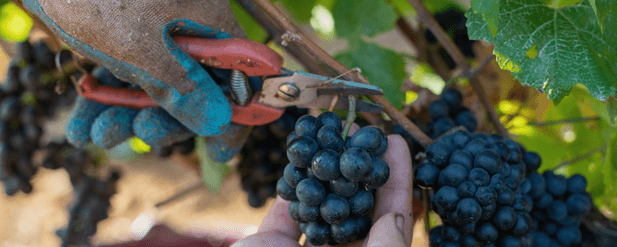
An ‘English’ summer
More than once we heard growers refer to an English style summer
Shocked into inaction by the frost, the vines’ development effectively ceased for three weeks, pushing the likely harvest date back into September again. When flowering finally arrived the weather was generally reported to be fine, the vines bursting into flower at pace. For all that, many growers experienced an uneven fruit set, probably due to the damage sustained during the frost. Loose bunches were reported widely – potentially a bit of a saving grace in terms of what was to follow. We can probably summarise June to early August with a picture of pallets of unsold Provençale rose. Regular rainfall through the season might have been a welcome relief from opposing pressures of recent dry vintages, but it meant that vegetative growth was rapid. Canopy management put a huge strain on teams. And with the rain came the constant threat of disease – particularly hard for vines who have been shocked by early season frost. Constant vigilance was required; treatments had to be carried out regularly. A few places were hit by hail, the north side of Gevrey on the 9th June and Rully even had it twice. Growers were put through their paces.
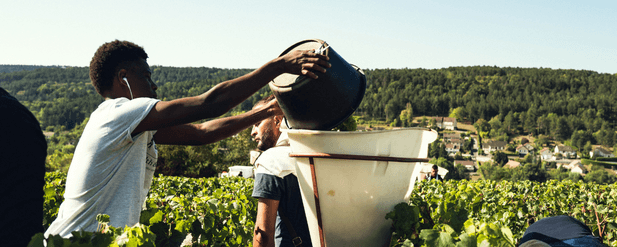
The Harvest
After the travails of the growing season, a measured finale.
Fortunes changed for vignerons in the middle of August when calmer and drier, though never hot, weather arrived. A northerly wind blew. The grapes that remained on the bunches were of a good size and their loose clusters that allowed plenty of air between the grapes. Skins were thin compared to recent years.
September itself was cool and led to a steady accumulation of aromas without any excessive increase in sugars. Most vignerons chose to start harvest between the 18th and the 27th September – a relatively short window in recent times. Almost all reported a shortened harvest period, primarily because there was so little to pick. Sorting was essential, certainly for the Pinot Noirs; a time-consuming job and also a yield reducing one – but necessary for those looking for only the purest flavours in their wines.
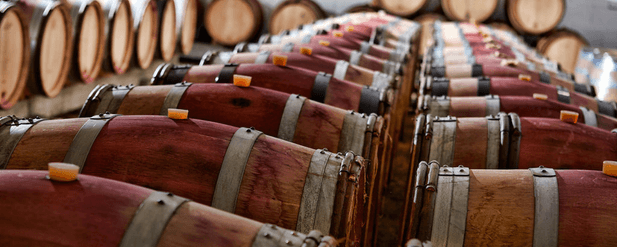
Vinification and Maturation
In contrast to recent vintages where extractions essentially happened by themselves, a more thoughtful and measured approach was needed in 2021.
Some, such as Cecile Tremblay, Jacques Devauges, and Christophe Roumier simply shrugged and said they’d vinified pretty much as usual – which you can take to mean, with great care and attention! Others were more expansive, detailing how the wines wouldn’t simply give up their structure and colour without a little coaxing; the structural components of these wines needed to be teased out in a way not seen for a number of years. There was in general, a move to less new oak usage, and very often a lowering in the percentages of whole clusters for fermentation. Domaines Bruno Clair, Drouhin Laroze, Perrot Minot and Hubert Lignier all ascribed to this methodology, while Clos des Lambrays, Robert Groffier and Christophe Roumier all maintained their usual levels of vendanges entieres. Both decisions have yielded fantastic results. At Mortet, Arnaud is becoming increasingly enamoured with the practice of removing just the main stem of each bunch, so much so that he used more of this technique than ever before. Two or three producers, including Guillaume Lavolee at Genot Boulanger, recounted how they’d only practiced punch downs in the warm post-fermentation stage, avoiding any chance of extracting harsher tannins, yet bolstering the mid-palate flesh of the wines. The results are exceptional.
Most growers reported easy primary fermentations, the cool weather being beneficial for the indigenous yeasts that incite spontaneous fermentation. Malos either went through quickly as at Tremblay, something Cecile puts down to her low levels of sulphur usage, or they occasionally lasted through till August, generally in those with deeper, cooler cellars.
And of course, the diminutive volumes posed logistical problems. Guillaume d’Angerville resorted to removing the end from a barrel so as to have a vessel small enough to vinify his single piece of Caillerets. Nicole Lamarche talked of warming her vats with tiny portable heaters beneath each vessel and having to move them every two hours. We also see a number of blended cuvees – most of which the growers would rather not repeat. Louis-Michel Liger-Belair was forced into marrying a number of his Vosne 1er crus in a single blend – a sensational if somewhat sacrilegious cuvee, at least in Louis-Michel’s eyes – while there were cuvees ‘ronds’ at Perrot Minot, Sauzet, Bachelet Monnot and Tollot Beaut too.
Decisions on élevage diverge. Some will bottle slightly earlier to preserve the playful fruit of the vintage. Others, such as Etienne Grivot, Bruno Clair and Frederic Mugnier believe there’s much more to these than meets the eye and will be giving their wines the full élevage, bottling only after a second winter in barrel. A handful of vignerons have eschewed new oak entirely for their 2021s, enhancing the delicate purity of their wines – notable in this regard are Pillot, Barthod and Genot-Boulanger. Almost all growers reported surprise at how the wines have changed since their inception. We heard many people say that prior to malo-lactic fermentation they feared the wines would be too light, without substance. But to a vigneron(ne) they all reported a remarkable blossoming in the wines after malos were completed. The wines have taken on flesh and volume, while remaining graceful and flowing.
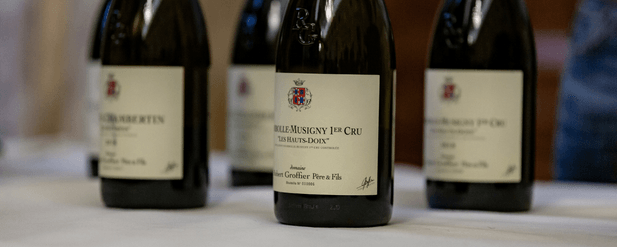
The Reds – The ballet dancers?
If you are a fan of red burgundies with a sense of elan, lissom textures and crystal-clear fruit, this vintage will be enormously alluring.
In terms of body, texture and the overall profile of the fruit, 2021 sits in stark contrast to the preceding three vintages. Guillaume d’Angerville summed it up nicely: “This is a vintage that those who have discovered Burgundy less than 20 years ago may not recognise. That is what makes it immensely interesting in my view”. Generally pale in colour and aromatically expressive, we found so much to love in the flowing graceful Pinot Noirs of 2021. They are in general, deliciously supple wines with fine and delicate structures that support bright pure fruit. Growers at times referenced the 2002s, at others 2012. Some remarked that the season was similar to 2010 or 2008, though all agreed there’s none of the firm acidity to be found in either of those vintages. Interestingly, while the season was certainly not bathed in sunshine, there’s an inherently luminous quality to the wines – crystalline flavours glow with the light of a cool summer. Those villages famed for producing a more muscular style instead show of their origins with complex savoury elements below the fruit. Chambolle has excelled. The vintage ‘style’ suits this village down to the ground and we tasted many stunning examples that flutter and float like flowers; it was Ghislaine Barthod who reminded us that “Pinot loves to struggle”. This site specificity will be particularly pleasing for the Burgundy fanatic and newcomer alike – the transparency of terroir is so clearly on display this year. Born from a cooler season, the markers of site are writ large – both at a village level, and especially at an individual vineyard level. After all, isn’t this half the reason we all fell so hard for this region in the first place?
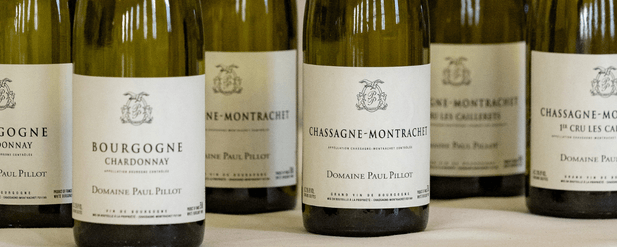
The Whites – The break-dancers?
If the reds are balletic dancers, the whites also have a kinetic quality to them, albeit in a more electric style.
Small yields often lead to Chardonnay at the denser, richer end of the spectrum but there is nothing flabby or overly concentrated about the whites from 2021. There’s a tension and a torque to many of the wines that propels them across the palate. Very occasionally we encountered the odd note of tropical fruit, but these were the exception. For the most part, minerality sits at the core of the 2021 whites, overlayed with cool fruit flavours with lots of purity and persistence. They are expressive and alive, with electric acidities that give the wines a certain vibration, yet they are not without the flesh to give them allure. The combination of tiny yields that have matured slowly and without an excess of heat has produced thrilling wines that, for the most part, offer up a seldom seen combination of intensity and energy. They’re tonic, lively wines with impressive depth and texture. The resulting effect is freshness without edges. They are utterly unique.
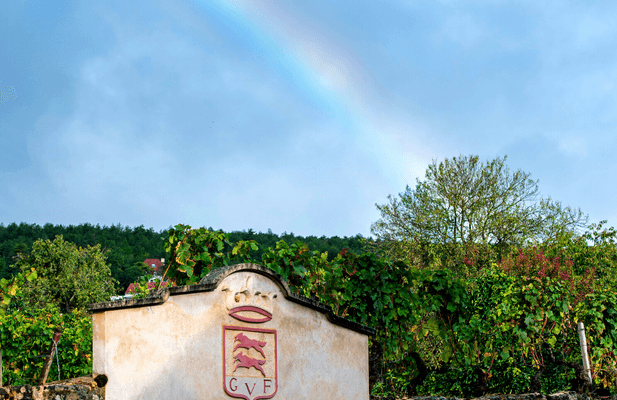
Conclusion
As Dolly Parton once said, “if you want the rainbow, you gotta put up with the rain”.
Through the grey skies of a Burgundian summer, miraculously luminous and aromatic wines have been produced. Are reds going to be the longest-lived wines of the past decade? Almost certainly not. But does this really matter? The sheer dimensions of the ‘19s and ‘20s will not only require time, they will demand it. These 2021s are cut from an entirely different cloth. The Pinots are infused with flavours of red fruits and flowers. They’re animated and expressive wines that speak clearly of their site and offer up so much of what is great about Pinot Noir – notably the ability to achieve complexity with elegance. They are exceptional for their fine fruit and the suppleness of their tannins; you can almost taste the gentle skins that housed the aromatic flesh below. So will they age? On balance, and by virtue of their balance, absolutely. Will you have to wait an age to drink them, almost certainly not.
The whites shine with the light of a cool sun, magnified by small yields, charged with electric acidity and sparkling minerality. They have all the snap and spark to see them making old bones in the today’s White Burgundy context – their cool concentration and precise flavours ought to develop beautifully in bottle.
Allocations are going to be tight in both colours, but this is all the more reason to explore some of the less well-known villages in our offer. Appellations like Marsannay, Maranges, Beaune and Pommard play host to a plethora of fantastic wines in 2021, many of which will provide phenomenally good drinking from four to five years post vintage.
At the upper reaches, you can expect genuine greatness in years to come. At best you have such finely tilled harmony here that you sense these are wines that will offer genuine pleasure throughout their lives. You could perhaps imagine the 2017s, but with more lift and complexity. Quite a few growers referenced the 2000 vintage – a vintage that has surprised everyone for its longevity. For Christophe Roumier, these will offer relatively early drinking “by which I mean from about 10-12 years post bottling”. Make of that what you will.
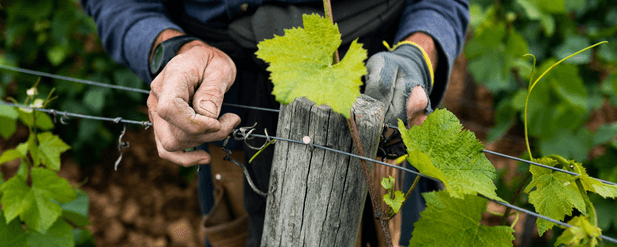
What the growers said:
“Alcoholic ferments were excellent with the acidity. As a result, the style of the wines is pure and clean, with a natural concentration due to the low yields. But the style is interesting as we have purity and expression of Pinot Noir with a great terroir typicity. To be honest it’s one of my favourite vintages for red. The style is brilliant, with complexity, but not a big density, but expressive flavours”.
Marc Bachelet
“These are wines with lots of energy and vibrancy but also harmony. The thing is, Pinot loves to struggle. They have a beautiful balance. The wines are fresh and elegant. We’ve come back to a vintage that’s more classique for Pinot”.
Ghislaine Barthod
“The most truly Burgundian vintage for a decade. Apart from the frost it was like going back to the old days”.
Bruno Clair
“I think they’ll give pleasure immediately, but we don’t need to drink them too fast are there are not many of them! But the balance is there. When we put them to barrels a year ago, I couldn’t have foreseen the volume and complexity we’ve gained”.
Sebastian Cathiard
“We were very surprised by this vintage, it’s magnifique. Very Bourguignon”.
Bertrand Chevillon
“It’s a vintage with wines which are delicate and aesthetic, without the concentration of mass of the previous six vintages – but they have finesse, and I like that a lot”.
Christophe Roumier
“With less ‘gras’ covering the wines we can see the terroir more”.
Caroline Drouhin
“I love the results of Pinot Noir and Chardonnay in this sort of vintage. I like the cold and rain, but it is hard to manage, especially for an organic producer. We had to do a lot of sorting, but the ripeness was there. Sadly we didn’t produce 10 of our cuvees this year due to the small yields”.
Guillaume Lavolee
“For me, really, this is a vintage of energy”.
Antoine Gouges
“More and more I compare this with 2010 and 2012. I think they are better than the 2017s. The acids are more like 2012, with energy. This vintage is much more serious than you might be expecting”.
Etienne Grivot
“Born in a crystal, ended in a crystal”.
Louis-Michel, Comte Liger Belair
“It was complicated, and irregular, but by working hard I think we’ve produced some superb wines. The hot vintages are harder to adapt to. 2021 wasn’t overly ripe, it was cold. It’s great like that. I love 2021, a vintage like this is really refreshing”.
Arnaud Mortet
“I would call it a perfect late harvest. It was a vintage with normal problems. Twenty or thirty years ago the problem was to get ripe grapes and pick them before the rot came. The compromise was always between ripeness and rot. In those days, good work in the vineyard was by definition anything that could make the grapes ripen earlier and delay the onset of botrytis. Nowadays botrytis is a very marginal problem. It was marginal in 2021. The great thing about a late September harvest is that we often have sunny bright days, without heat, which means the grapes ripen comfortably. The vines are not stressed, and this is when their biochemistry works best”.
Frederic Mugnier
“Even if it’s small I’m quite happy, for in the end, it’s very very good”.
Thierry Pillot
“The millesime is electric. A combination of fresh aromas, high minerality, normal pH and slightly higher levels of acidity gives this sensation of freshness. The cool summer, the intensity – these are like nothing else”.
Benoit Riffault
“I love this vintage. It reminds me a little bit of 2002, with this present acidity, and is much more like 2002 than say a 2008 or 1996. These 2021s are not a hard acid vintage, but they have a kinetic quality to their freshness that’s beneficial and not dominant”.
Nathalie Tollot
To view the Burgundy 2021 wines and full offer, please click here
61 St. James's Street, London SW1A 1LZ
Reg. Company No: 68576
AWRS URN: XPAW00000105319
Please do not share with anyone under the legal purchase age for alcohol.
Drink Responsibly www.drinkiq.com
© Justerini & Brooks 2024. All Rights Reserved.